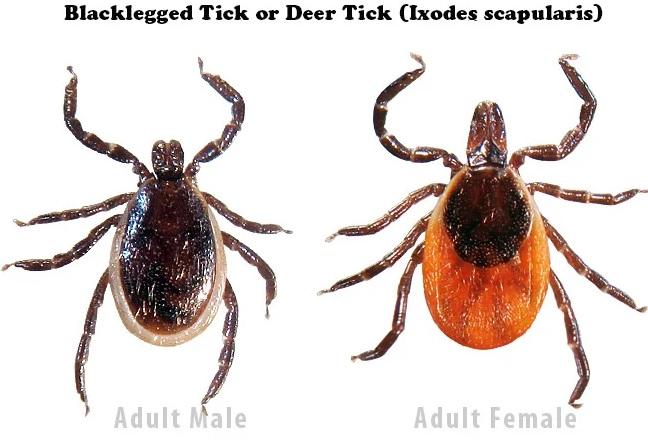As someone who’s spent a lot of time outdoors, I know that tick bites can happen to anyone. Ticks are tiny parasites that can attach themselves to your skin and spread diseases such as Lyme disease.
Ticks are one of the most common parasites worldwide, and they can spread dangerous diseases such as Lyme disease. According to a recent study by the Centers for Disease Control and Prevention (CDC), tick-borne illnesses affect approximately 500,000 Americans each year, with an estimated 10,000 of those cases resulting in hospitalization. Ticks are also increasingly prevalent in Europe and Asia, making it essential for people around the world to be aware of how to remove a tick and prevent tick-borne illnesses safely. Recent studies show that each year 2,200 people under 65 years of age are hospitalized annually due to Lyme disease; furthermore, this is estimated to cost Americans $25.8 million annually.
When it comes to Lyme disease, the most effective way of preventing transmission is by removing ticks quickly – ideally within 24 hours. According to the CDC, if a tick remains on your body for at least 36-48 hours or more, then there’s an increased chance that you could contract the illness. Taking action swiftly as soon as possible will go a long way in decreasing any potential risk!

Blacklegged Tick (also known as the Deer Tick)
Tick bites can happen to anyone, regardless of age or outdoor activity level. As someone who’s spent a lot of time outdoors, I know that it’s important to take the necessary precautions to avoid tick bites and remove any ticks that may have attached. In this article, we’ll explore how to remove a tick and prevent tick-borne illnesses safely. Tick prevention and safe removal are essential when it comes to protecting your health. Without proper precautions, you can become infected with a tick-borne illness. It’s important to take the necessary steps to protect yourself and your loved ones from tick-borne illnesses. In the following sections, we’ll discuss how to safely remove a tick, as well as how to prevent tick-borne illnesses.
- Use fine-tipped tweezers: The first step in safely removing a tick is to use fine-tipped tweezers. Use the tweezers to grasp the tick as close to the skin’s surface as possible and pull upward with steady, even pressure. Do not twist or jerk the tick, as this can cause the tick’s mouth-parts to break off and remain in the skin. It’s important to use fine-tipped tweezers to ensure you are able to grasp the tick as close to the skin as possible without squeezing its body. This will help to prevent the tick from regurgitating its stomach contents, which can increase the risk of infection.
- Clean the area: After removing the tick, clean the area with rubbing alcohol or soap and water. This will help to prevent infection and reduce the chance of developing a skin infection. The tick bite area should be cleaned immediately after removal to reduce the chance of infection. The use of soap and water or rubbing alcohol can help to kill any remaining bacteria or viruses.
- Dispose of the tick: It’s important to properly dispose of the tick. You can do this by putting it in a sealed bag or container and then throwing it away. Avoid crushing the tick, as this can cause it to release infectious fluids. It is important to properly dispose of the tick to prevent it from coming into contact with other people or animals.
- Watch for symptoms: After removing the tick, watch for symptoms of tick-borne illnesses such as fever, headache, fatigue, or a rash. If you develop any of these symptoms, seek medical attention immediately. It is important to monitor your health after a tick bite and see a doctor if you develop symptoms of a tick-borne illness.
- Use tick repellent: Using tick repellent can help to prevent tick bites in the first place. Repellents that contain DEET, permethrin, or picaridin can be applied to your skin or clothing to help keep ticks away. It is important to use tick repellent when spending time in tick-infested areas to reduce the risk of tick bites.
- Check for ticks: Check your body, clothes and gear for ticks after spending time in wooded or grassy areas. Ticks can be as small as a poppy seed, so it’s important to be thorough in your search. Checking for ticks is important to ensure that you remove the tick as soon as possible after it has attached to your skin.
- Dress in long sleeves and pants: When spending time in tick-infested areas, dress in long sleeves and pants to help keep ticks off your skin. Light-colored clothing makes it easier to spot ticks. Dressing in long sleeves and pants can help to reduce the amount of skin exposed to ticks, and light-colored clothing makes it easier to spot ticks if they do happen to attach themselves to your clothing. This can help to reduce the risk of tick bites and make it easier to remove ticks before they have a chance to attach to your skin.
Conclusion: In conclusion, ticks can carry serious diseases, so it’s important to take steps to protect yourself. Remember, safely removing a tick as soon as possible can help to prevent tick-borne illnesses. If you develop symptoms of a tick-borne illness, seek medical attention immediately. By following these tips, you can reduce your risk of tick bites and keep yourself safe when spending time in tick-infested areas. It’s important to be aware of the risks, take precautions and know how to safely remove a tick.
References:










